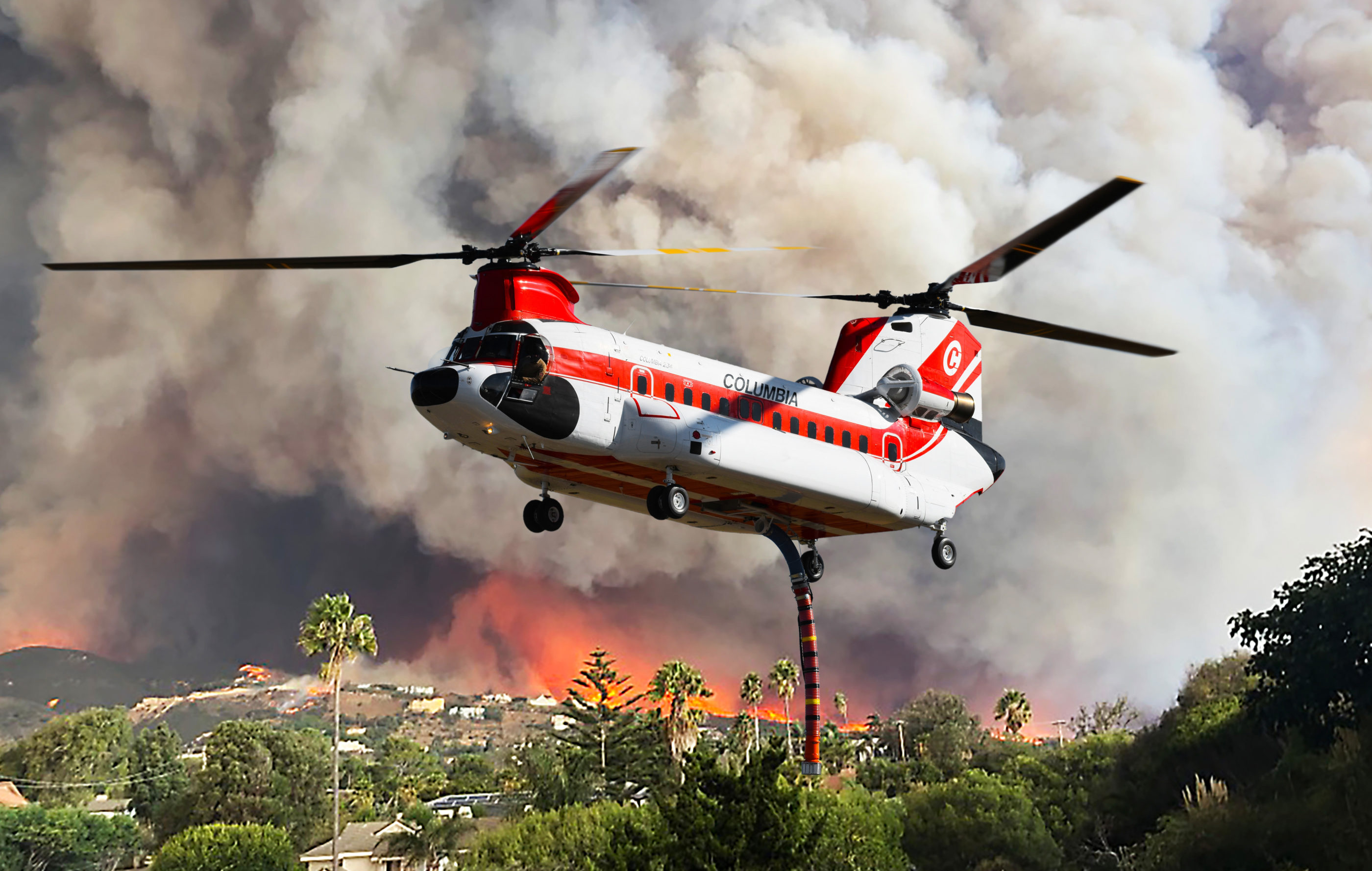Columbia Helicopters (Columbia) and Aurora Flight Sciences (Aurora), a Boeing Company, have entered into a memorandum of understanding to jointly explore the design, integration, testing, and demonstration of an enhanced pilot situational awareness (EPSA) degraded visual environment (DVE) flight capability on a Columbia helicopter to be used for aerial wildland fire suppression.

Since aerial firefighting began, fire suppression from aircraft has largely remained a clear air, daytime endeavor. Visibility hazards, such as wildfire smoke, limit aircraft operations on fires to approximately one-third of the available day. While night vision devices (NVDs) are enabling some expansion to night operations, nothing currently exists to enable pilots to fly safely in DVEs caused by thick and persistent smoke during the day.
Columbia and Aurora aim to overcome these limitations with a new flight system that integrates multiple aircraft-mounted sensor technologies that enhance situational awareness and deliver a real-time, clear, synthetically-adapted image to the pilot.
“This technology brings the true capability to operate safely in DVE conditions, day or night, vastly expanding Columbia’s capabilities,” said Santiago Crespo, Columbia’s vice president of growth and strategy. “When aircraft have the ability to fight fires in all conditions, they can significantly contribute to reducing acres burned and the overall ballooning cost of fires.”
A 2018 report written by the U.S. Department of the Interior estimated that safe employment of aerial fire suppression during DVE conditions could reduce acres burned by one million acres a year and reduce annual suppression costs by $300 million.
The DVE flight system is expected to combine inputs from an on-board modular sensor suite with Aurora’s automated trajectory planning technology to identify safe flight paths. Data from these systems is visually represented in a transparent heads-up display mounted to the pilot’s helmet, providing navigation and critical flight data in a simple real-time display to support both daytime and night-time operations.
Under the terms of the understanding, the parties expect Aurora would be responsible for developing and testing the technology while Columbia would be responsible for providing the aircraft, integration of the system, support, and operator subject matter expertise.
Once a system is developed, tested, and integrated, Columbia and Aurora plan to hold demonstrations for the U.S. Department of Interior, U.S. Forest Service and state fire agencies with the goal of encouraging legislation and contract language that allows for the new technology’s use on the country’s growing wildfires.
This press release was prepared and distributed by Columbia Helicopters.









